Paella - Valencia Style

Took a cooking class. This paella is easy to make. Not over powering. Found a paella pan at the local Winners store for $10. I would half this recipe for less people as this recipe can feed about 16 people. I have the full and 8 people recipe listed. Picture above is from class but I have made this a lot and if I can do this...so can you.
Paella - Valencia Style
Took a cooking class. This paella is easy to make. Not over powering. Found a paella pan at the local Winners store for $10. I would half this recipe for less people as this recipe can feed about 16 people. I have the full and 8 people recipe listed. Picture above is from class but I have made this a lot and if I can do this...so can you.
Cooking Instructions
- 1
HINT If you have people sensitive to garlic before mincing garlic, take the heart out which is the green piece in the middle of the clove. Briefly sauté garlic and julienned peppers in 1/2 of the oil. (Oil should generously cover the pan) For 5 minutes on medium heat. Add salt lightly, to taste. Remove peppers from pan and set aside. Leave garlic in pan.
- 2
Sauté the chorizo sausage and the cubed chicken on medium heat for about 5 minutes, remember you are adding fresh ingredients to the pan so salt lightly for taste. Next add the rice. Saffron add 1 tsp of salt and the remaining oil. Sauté the ingredients in the pan for about 5 minutes. Even out the remaining ingredients in the pan and place the two sprigs of rosemary in the pan. Now you do not stir again.
- 3
Add the warm chicken broth by using a ladle until the rice is covered in the pan. Do not dump the broth in as you want to keep the evenness of the rice on the bottom of the pan. Meat should peak out. Do not forget to add salt for taste. Scatter the chick peas evenly in the pan. Remember do not stir in. Let simmer for 20 minutes.
- 4
Add shrimp and bite size seafood of choice along with peas and re add peppers, arrange the remaining ingredients so that no mixing is required (arrange it) Distributing evenly in pan.
- 5
Cover with tinfoil and cook for approximately 10 minutes or until rice is cooked.
- 6
HINTS - You can freeze the left over Paella but not for a long period of time. You could place in the oven to heat up. You can also re-fry the left over Paella in pan by adding some oil.
- 7
You could buy the chorizo sausage from Cosco - kirklands and squeeze out of casing
- 8
You can find a paella seasoning and if you live in Vancouver BC it’s at the Gourmet Warehouse
- 9
Typical appetizer with this is melon or cantaloupe (bite size) wrapped in prosciutto
- 10
Spanish saffron has a shelf life of two years
- 11
Similar Recipes
-

Paella Valenciana Paella Valenciana
As we say in Valencia, today feels like a Fallas day, and what better time to share my paella Valenciana—without lima beans, since I don't like them. For the second year in a row, we can't celebrate our beloved Fallas festival because of the pandemic. In my group, Falla L'Alquenència de Alzira, we've put together a virtual Fallas program and are kicking it off today with a paella contest, so I'm also sharing a photo of my decorated paella in honor of our beloved mascletà. It's a shame we can't enjoy the smell of fireworks... but I hope you enjoy this recipe as much as we do in Valencia. Translated from Cookpad Spain
Translated from Cookpad Spain -

Paella Valenciana Paella Valenciana
We have a little house in the country where, during the summer months, our whole family—grandparents, parents, children, and grandchildren—lives together. Every Sunday, we all gather around the table to enjoy a delicious paella. My grandfather taught my mother, my mother taught me, and now I teach my children. Any celebration comes with a good paella, but paella means much more than just a meal—it's a way to bring the family together and create happiness. Translated from Cookpad Spain
Translated from Cookpad Spain -

Paella Valenciana Paella Valenciana
We love paella, valenciana or marinera. My version of a classic spanish dish.
-

Paella Valenciana Paella Valenciana
Paella Valenciana has several variations. Although the original recipe is made in a specific way, over time some ingredients have been changed or added to enhance its flavor and substance. Jomaru Translated from Cookpad Spain
Jomaru Translated from Cookpad Spain -

Paella Valenciana Paella Valenciana
This recipe comes from my favorite aunt, who is an absolute whiz in the kitchen. Translated from Cookpad Spain
Translated from Cookpad Spain -

Valencian Paella Valencian Paella
Delicious recipe for the traditional Valencian paella 🤤 Translated from Cookpad Spain
Translated from Cookpad Spain -

Paella Valenciana Paella Valenciana
Since tomorrow is International Paella Day, I chose the traditional recipe for "Paella Valenciana." This version includes snails, giving it a special flavor. As a proud Valencian, I had to pay this small tribute to my homeland. Translated from Cookpad Spain
Translated from Cookpad Spain -

Traditional Valencian Paella Traditional Valencian Paella
While living in Valencia as a university student, I worked weekends and holidays at a restaurant in Meliana, near Valencia. There, I was either in the kitchen or at the paella station, where we cooked between 10 and 30 paellas per meal service. That's where I learned to make authentic Valencian paella, as well as variations with artichokes and snails. Although I don't have a gas paella burner here, you can manage with an electric stovetop—just make sure the paella boils and cooks evenly. It doesn't use chicken broth; the secret is in the sofrito. Translated from Cookpad Spain
Translated from Cookpad Spain -

Paella Valenciana Paella Valenciana
Fresh vegetables always add something extra compared to frozen ones. Translated from Cookpad Spain
Translated from Cookpad Spain -

Valencian Paella Valencian Paella
Authentic Valencian paella Translated from Cookpad Spain
Translated from Cookpad Spain -

My Valencian Paella My Valencian Paella
I’ve read recipes from here and there and created my own combination. I used a 20-inch (50 cm) paella pan, and the rice ends up about 1 1/4 inches (3 cm) high. Translated from Cookpad Spain
Translated from Cookpad Spain -

Valencian Paella Valencian Paella
Paella originated in the rural areas of Valencia between the 15th and 16th centuries, due to the need for farmers and shepherds to have an easy-to-prepare meal with ingredients they had on hand in the fields. They always ate it in the afternoon. Translated from Cookpad Spain
Translated from Cookpad Spain
More Recipes



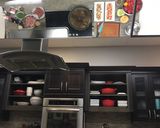


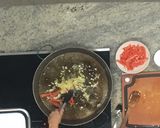




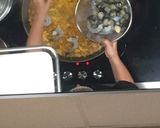


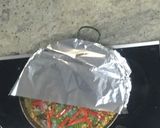


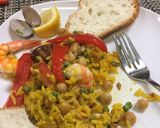






Comments